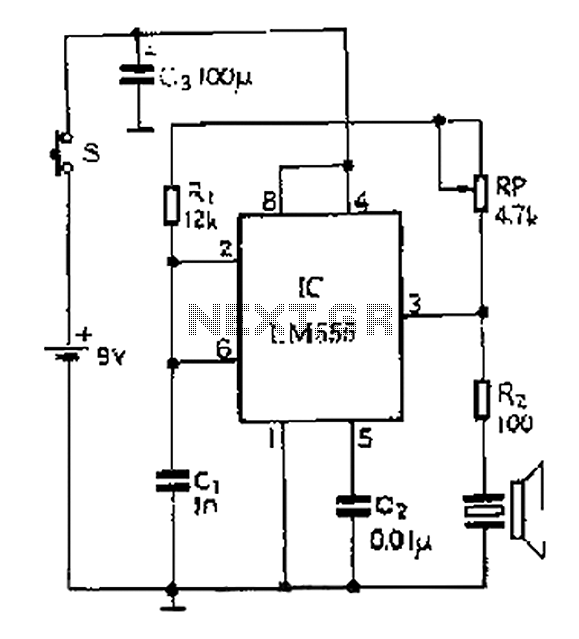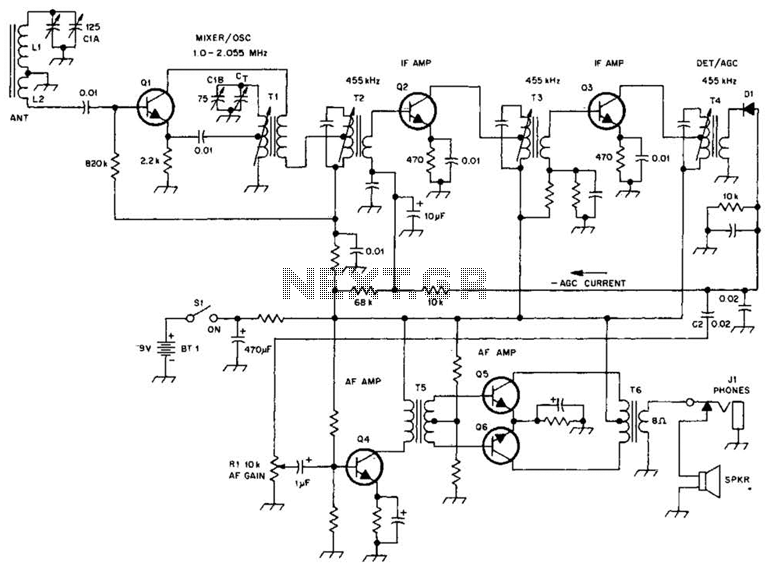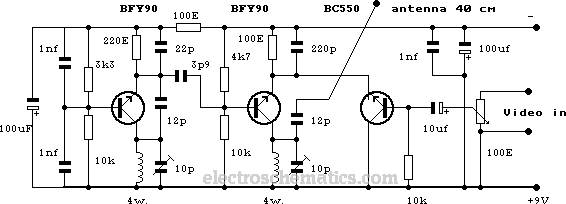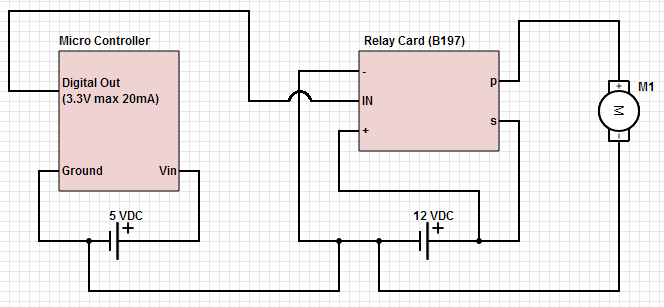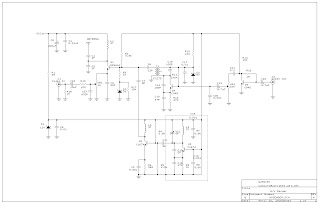
Harmonic Distortion Analyzer Circuit
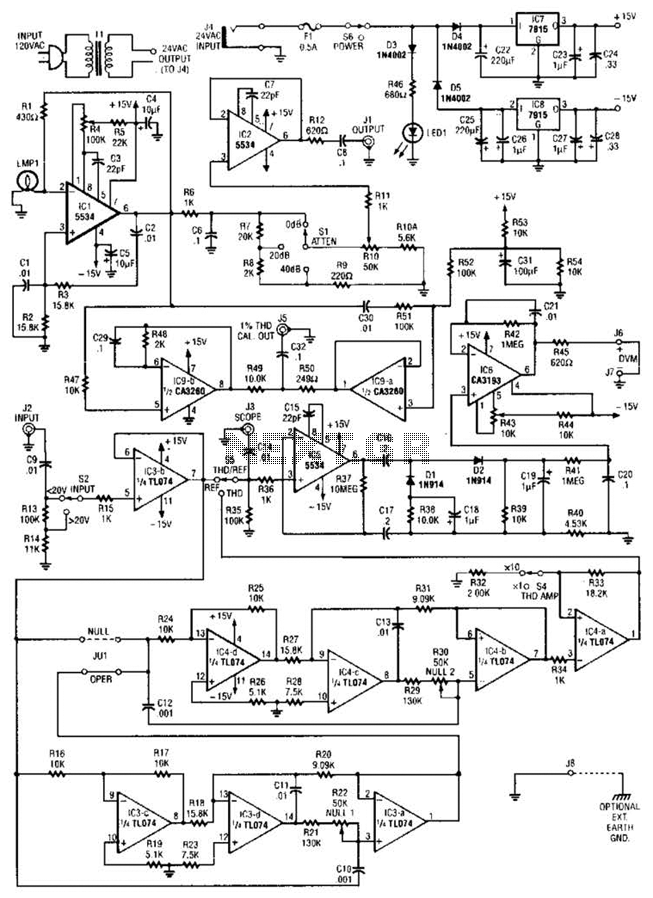
The circuit comprises a low-distortion, 1-kHz oscillator designed to measure Total Harmonic Distortion (THD) at a user-selected voltage level, suitable for voltage amplifiers or for testing amplifiers with power levels up to 600 W. It is capable of detecting THD levels as low as 0.005% (-86 dB) and incorporates a built-in one-percent THD calibrator. The output device utilized in the circuit is a digital multimeter (DMM).
The described circuit operates primarily as a test instrument for evaluating the performance of voltage amplifiers and power amplifiers. The low-distortion oscillator generates a stable 1-kHz sine wave, which serves as the input signal for the amplifiers under test. This frequency is commonly used in audio applications, making it relevant for assessing audio amplifiers.
The measurement of Total Harmonic Distortion (THD) is critical in determining the fidelity of an amplifier. By selecting the appropriate voltage level, the circuit can accommodate various amplifier specifications, ensuring versatility in testing different devices. The ability to detect THD levels as low as 0.005% (-86 dB) indicates a high degree of sensitivity and accuracy, essential for professional audio testing.
The built-in one-percent THD calibrator allows for precise calibration of the measurement system, facilitating consistent and reliable results. This feature is particularly valuable in ensuring that the circuit provides accurate THD readings across multiple tests and conditions.
The output device, a digital multimeter (DMM), is employed to display the measured THD values. The DMM is capable of providing clear and precise readings, making it an ideal choice for monitoring the performance of the circuit. The integration of the DMM with the oscillator and calibration features ensures that the entire system functions cohesively, delivering accurate assessments of amplifier performance.
Overall, this circuit serves as an essential tool for engineers and technicians in the field of audio electronics, providing the capability to evaluate and ensure the quality of amplifiers through precise THD measurements. The circuit includes a low-distortion, 1-kHz oscillator and will measure THD at a user selected voltage level for voltage amplifiers, or for checking amplifiers of power levels to 600 W. It will detect THD levels of .005% (-86 dB). A built-in one-percent THD calibrator is included. The output device is a digital multimeter (DMM).
The described circuit operates primarily as a test instrument for evaluating the performance of voltage amplifiers and power amplifiers. The low-distortion oscillator generates a stable 1-kHz sine wave, which serves as the input signal for the amplifiers under test. This frequency is commonly used in audio applications, making it relevant for assessing audio amplifiers.
The measurement of Total Harmonic Distortion (THD) is critical in determining the fidelity of an amplifier. By selecting the appropriate voltage level, the circuit can accommodate various amplifier specifications, ensuring versatility in testing different devices. The ability to detect THD levels as low as 0.005% (-86 dB) indicates a high degree of sensitivity and accuracy, essential for professional audio testing.
The built-in one-percent THD calibrator allows for precise calibration of the measurement system, facilitating consistent and reliable results. This feature is particularly valuable in ensuring that the circuit provides accurate THD readings across multiple tests and conditions.
The output device, a digital multimeter (DMM), is employed to display the measured THD values. The DMM is capable of providing clear and precise readings, making it an ideal choice for monitoring the performance of the circuit. The integration of the DMM with the oscillator and calibration features ensures that the entire system functions cohesively, delivering accurate assessments of amplifier performance.
Overall, this circuit serves as an essential tool for engineers and technicians in the field of audio electronics, providing the capability to evaluate and ensure the quality of amplifiers through precise THD measurements. The circuit includes a low-distortion, 1-kHz oscillator and will measure THD at a user selected voltage level for voltage amplifiers, or for checking amplifiers of power levels to 600 W. It will detect THD levels of .005% (-86 dB). A built-in one-percent THD calibrator is included. The output device is a digital multimeter (DMM).
